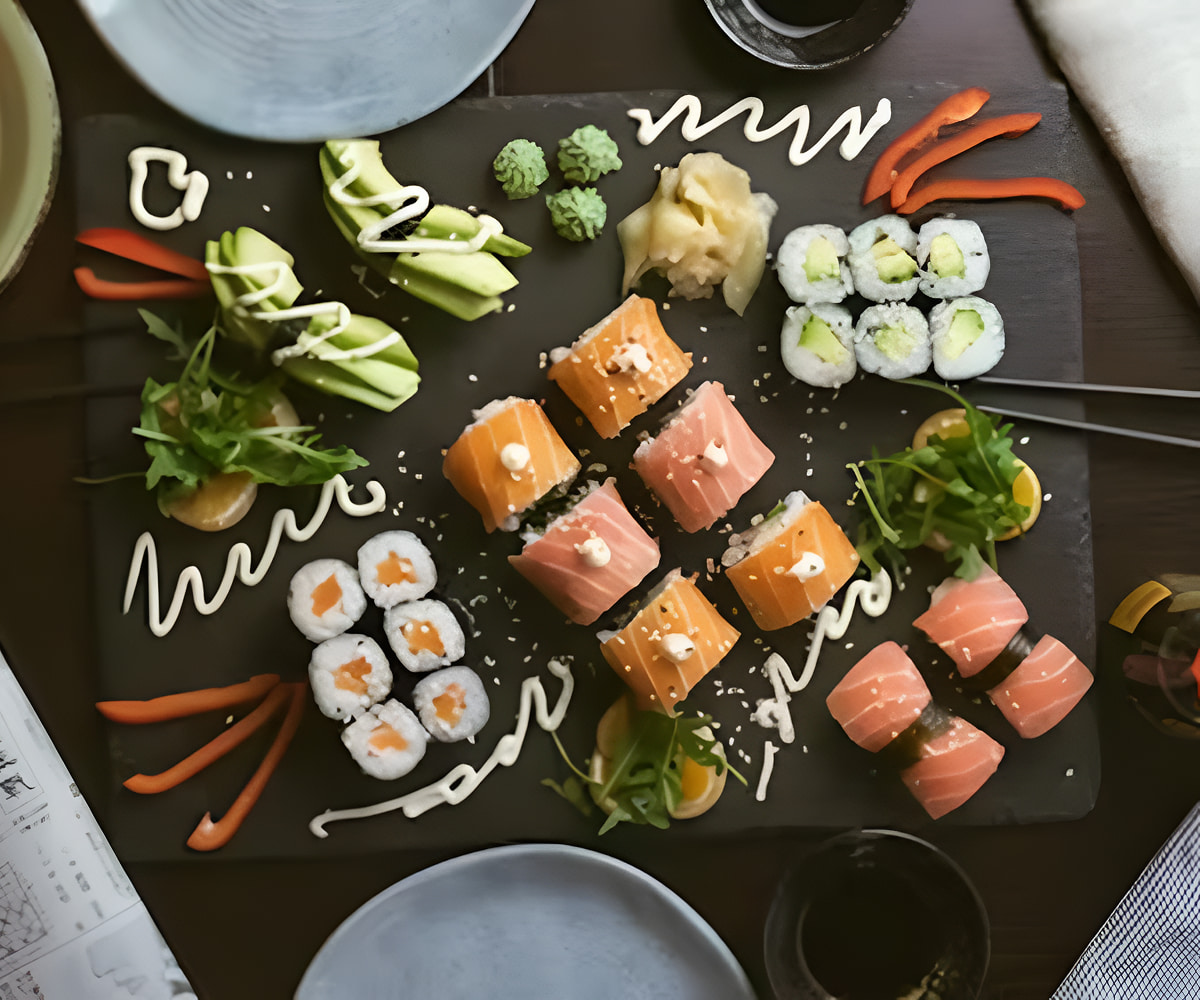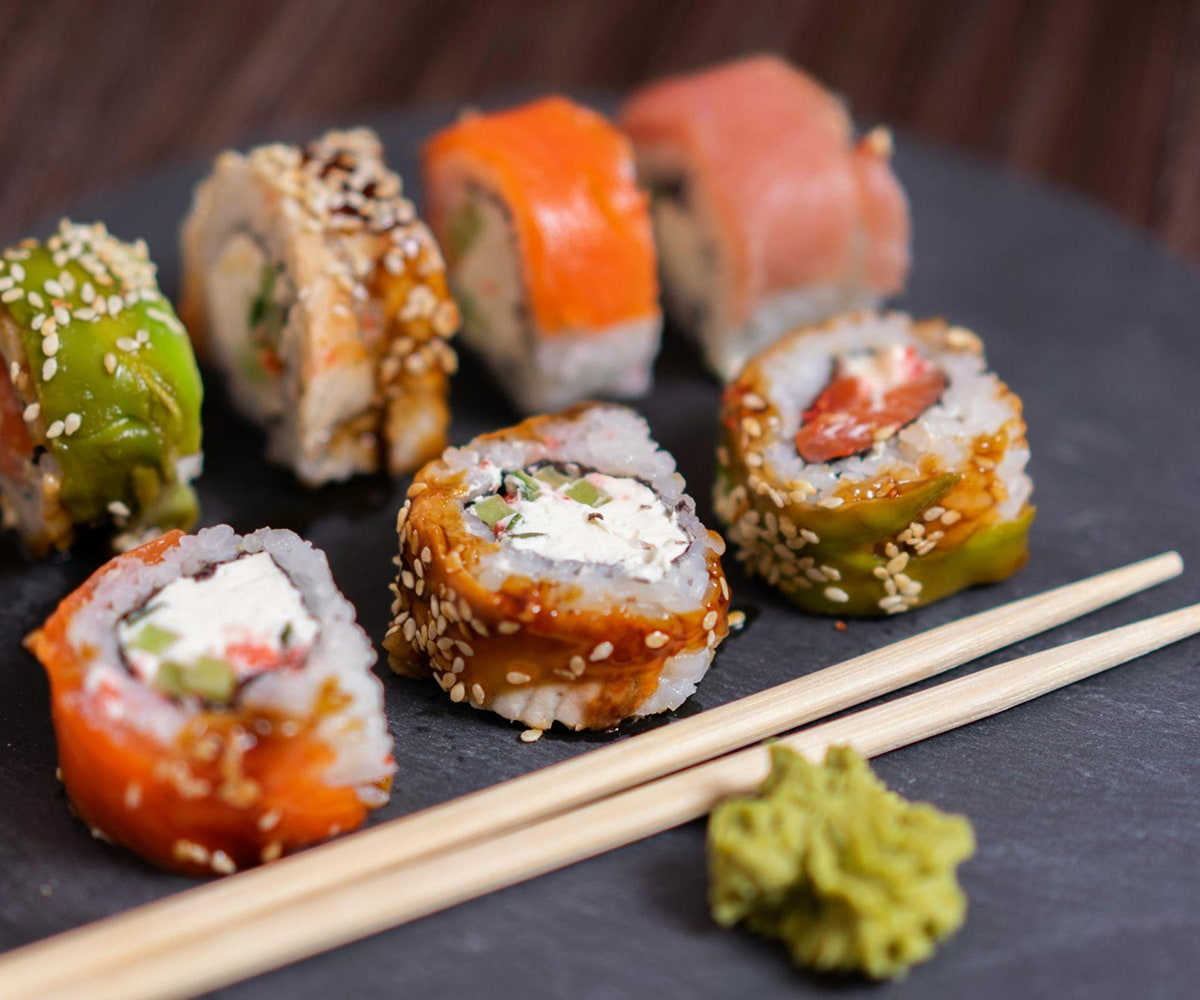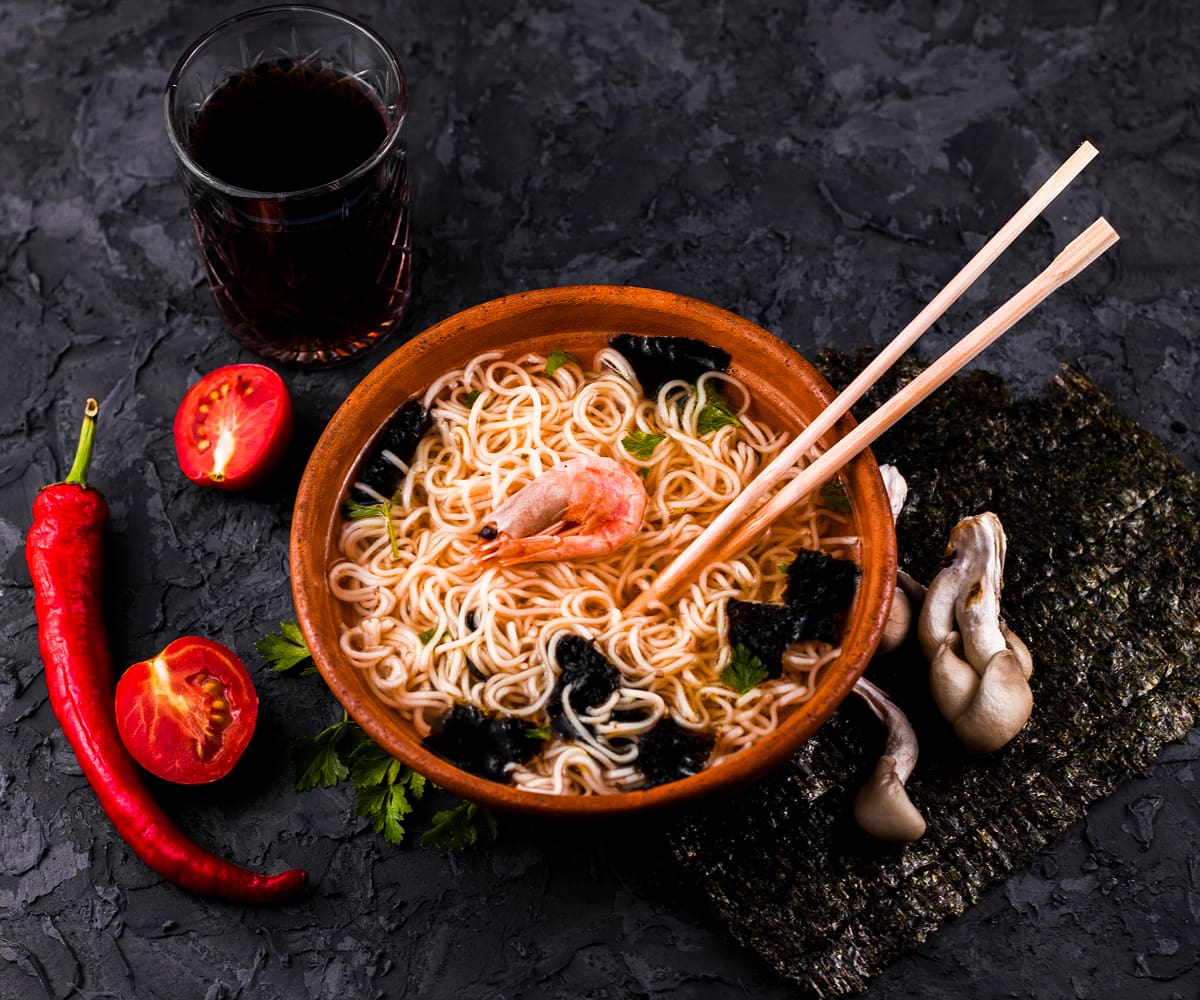At Ram & Roll at Kempinski The Boulevard, we celebrate modern Japanese dining with an uncompromising respect for authenticity. As we prepare for our grand opening in Downtown Dubai, guests often ask about the difference between wasabi and horseradish—a topic that touches flavor, farming, and the art of pairing. Here, we clarify what sets these roots apart and how thoughtful use of genuine ingredients elevates sushi, handrolls, and the broader Japanese dining experience.
Key Takeaways
- Wasabi and horseradish are different plants with distinct flavors, textures, and culinary roles.
- Real wasabi offers a clean, fleeting heat and verdant aroma; horseradish delivers a sharper, longer-lasting bite.
- At Ram & Roll, authenticity and premium sourcing guide how we pair condiments with sushi, handrolls, and ramen.
What Is Wasabi?
Wasabi (Wasabia japonica), a member of the Brassicaceae family, is a cornerstone of traditional Japanese cuisine. The plant is remarkably particular about its environment: it thrives in cool, clean, gently flowing water and shaded conditions, commonly in mountainous areas of Japan. Because these conditions are difficult to recreate, fresh wasabi is comparatively rare and prized for its fragrance and balance of sweetness, umami, and heat.
1. Origin and Cultivation
In Japan, wasabi is traditionally cultivated in gravelly stream beds with constant movement of pristine, mineral-rich water and consistent shade. These “sawa” (water-grown) farms demand exacting care—stable temperatures, filtered sunlight, and meticulous water management. Such precision yields a rhizome with a vivid green hue and a complex flavor that emerges brightest when freshly grated just before serving.
2. Flavor and Aromatics
Freshly grated wasabi is bright, herbaceous, and crisp. The heat lifts quickly through the nose, then fades, allowing delicate flavors—especially raw fish—to shine. This ephemeral quality is why wasabi is typically grated to order and served in small amounts alongside sushi and sashimi rather than mixed heavily into sauces.
What Is Horseradish?
Horseradish (Armoracia rusticana) is a separate plant, also in the Brassicaceae family but native to Eastern Europe and now widely cultivated in temperate regions. It’s hardy, adaptable, and often used in Western sauces and condiments.
1. Origin and Cultivation
Horseradish prefers well-drained, fertile soil and plenty of sunlight. Its robust nature makes it common in home gardens and farms across North America and Europe. The roots are typically harvested in cooler months, when their signature pungency and earthy sweetness are most pronounced.
2. Flavor and Heat
Horseradish brings a bold, lingering heat and a rustic, earthy profile. It’s excellent in creamy sauces, dressings, and as a bracing foil to rich meats. While both wasabi and horseradish deliver heat, horseradish tends to dominate and remain on the palate longer, whereas wasabi is more fragrant and fleeting.
Wasabi vs Horseradish: The Key Differences
1. Taste and Pairing
Wasabi’s fresh, green character complements elegant, lightly seasoned dishes—think pristine sashimi or a precisely rolled handroll—where the goal is to accent, not overshadow. Horseradish’s assertiveness suits heartier flavors and creamy textures, making it a natural partner to roast beef, smoked fish, or a tangy salad dressing.
2. Appearance and Texture
Fresh wasabi, when grated, forms a smooth, moist paste with a natural light-green color. Horseradish, typically processed into a white paste or grated raw, feels more fibrous and can taste spikier when used straight. These tactile differences show up on the plate: wasabi looks delicate and glossy; horseradish reads rustic and robust.
3. Availability and Authenticity
Because genuine wasabi requires very specific growing conditions, it’s less common outside Japan. Many commercial “wasabi” pastes are actually blends of horseradish, mustard, and green coloring. At Ram & Roll, we take care to showcase condiments that respect the spirit of Japanese dining—used thoughtfully and in service of balance.
How We Use Wasabi in Japanese Cuisine
In modern Japanese cooking, wasabi is not simply “spicy”; it’s a tool of precision. A small dab between rice and fish on nigiri, or a measured touch alongside sashimi, preserves clarity of flavor. This approach aligns with our broader culinary philosophy at Ram & Roll: restraint, craftsmanship, and reverence for premium ingredients.
Signature Moments at Ram & Roll
Our sushi and handrolls are assembled to order with perfectly seasoned rice and premium fish, allowing a whisper of wasabi to heighten aroma and texture without overpowering. Explore our fresh-to-order handrolls or discover how we approach rice with intention on our sushi rice guide. When you’re ready to plan your visit, browse the full selection on our menu.
Where Horseradish Shines
Horseradish excels in creamy and hearty preparations. It can bring brightness to a dressing or cut through richness in a sauce. While not a traditional Japanese staple, it occasionally appears in globally inspired kitchens for its punchy character. The important takeaway is to choose the right condiment for the right dish—delicacy invites wasabi; indulgence can benefit from horseradish.
Choosing Authenticity at Ram & Roll
Authentic ingredients are central to our promise. Our ramen broths—whether velvety tonkotsu, bold spicy miso, or clean shoyu—are simmered for hours to draw depth and nuance. These bowls don’t need brash heat to impress; technique and balance do the heavy lifting. If ramen is your love language, plan your first bowl with our guide to the best ramen in Dubai, or reserve your seat for opening week via our reservation page.
Breakfast, Lunch & Dinner—The Complete Experience
Ram & Roll is designed as a sanctuary for discerning diners where serenity meets indulgence. We’ll serve a refined Japanese-style breakfast—think nourishing broths, delicate eggs, and thoughtful accompaniments—alongside handcrafted lunch sets and elegant dinner offerings. Start the day with intention by exploring our Japanese breakfast, then return for an evening of modern Japanese dinner in Downtown Dubai with curated drink pairings from our selection of Japanese teas, premium sake, and crafted cocktails.
Frequently Asked Questions
1. What is the main difference between wasabi and horseradish?
They’re different plants with distinct culinary roles. Wasabi is traditionally used to enhance delicate flavors with a bright, quick heat. Horseradish delivers a stronger, longer-lasting punch better suited to robust dishes and creamy sauces.
2. How is wasabi used in authentic Japanese dining?
Wasabi is applied sparingly—often between fish and rice on nigiri or as a small accompaniment to sashimi—so its aromatics lift the dish without masking quality fish. This restraint is central to our approach at Ram & Roll.
3. Is wasabi “spicier” than horseradish?
Not exactly. Wasabi’s heat is aromatic and fleeting; horseradish typically feels hotter and lingers longer. The right choice depends on the dish and the experience you want.
4. Can I substitute horseradish for wasabi?
You can, but the flavor will change. Horseradish lacks the fresh, green perfume of true wasabi and can overshadow delicate seafood. For sushi and sashimi, wasabi remains the preferred choice.
5. Why is authentic wasabi less common?
It requires very specific, carefully managed growing conditions—cool temperatures, clean flowing water, and shade—making it harder to cultivate and less widely available than horseradish.
Plan Your Visit
Discover the balance of craft and comfort that defines Ram & Roll—Dubai’s modern Japanese dining destination at Kempinski The Boulevard. Preview our offerings on the menu, explore our sushi experience, and secure your table via reservations. We look forward to welcoming you soon.






